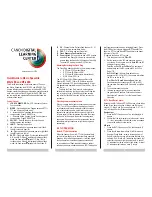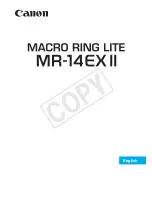
36
dark current. Taking 16 flat fields and 16 flat-darks will yield excellent results. Luckily because
flat fields tend to use fairly short exposures, you can often take a full series of flat fields and flat-
darks in just a few minutes.
The resulting master Flat Field is used to scale the pixel values in the light frame, eliminating the
effects of pixel non-uniformity, optical vignetting and dust on the optical surfaces.
Bias frames
A Bias Frame is a zero-length (dark) exposure intended to measure just the difference between
the pixels plus any additional noise added during the process of reading the image from the
CCD and converting it into a digital image file. Because the CCD pixels are emptied immediately
before the image is read from the CCD, only a small amount of dark current has had a chance
to build up, but that rate of accumulation varies slightly for every pixel. Also, reading an image
from a CCD is not instantaneous. Pixels near the bottom of the CCD are read later than pixels
closer to the top of the CCD so pixels toward the bottom tend to have slightly higher pixel values
than pixels closer to the top.
One common use of bias frames is for scaling dark frames. By subtracting a bias frame from a
dark frame, you end up with a “thermal frame.” A thermal frame contains pixel values showing
just the effect of dark current. Because dark current in any given pixel accumulates at a
constant rate, a thermal frame allows you to predict with reasonable accuracy how much dark
current there would be for different length exposures. However, given the opportunity, you’re
generally better off taking dark frames that match the exposure times of your light frames.
Here is an example bias frame. Note again that this image has been automatically stretched to
show variations in the pixel values. Your software does this automatically when you view an
image file. All the pixel values in the original image fall between 181 and 221 out of a possible
range of 0-65,535, meaning that the unstretched image would appear almost perfectly and
uniformly black.
Bias frames can also be used to analyse the read noise in a CCD camera.
Taking bias frames is easy and takes only a couple of minutes. When you’re taking your dark















































